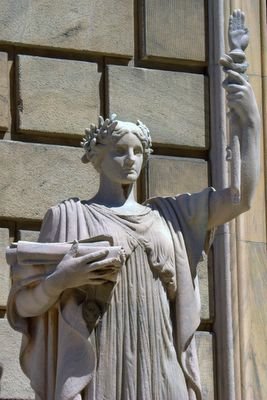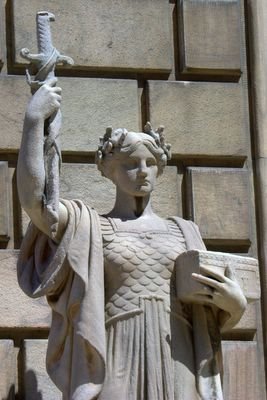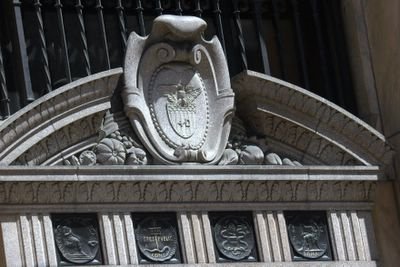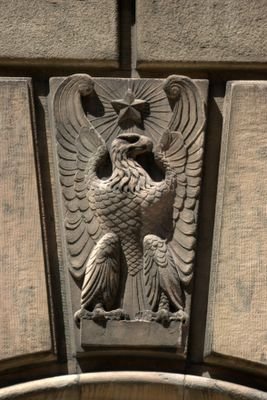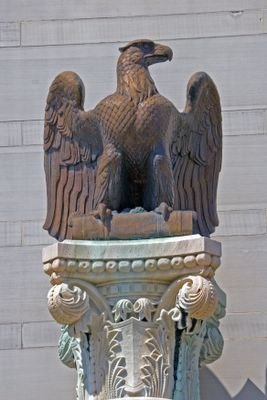Art and Justice: Cuyahoga County Court House
I needed to kill some time before the Cavaliers-Wizards playoff opener so instead of helping Mary paint bedrooms it was a perfect day to go downtown Cleveland and search for symbolic icons to photograph. Let's start with the Cuyahoga County Court House. It has many statues on its facades, both north and south. In fact, it has more exterior statues than any of the public buildings. Enjoy!
Pediment on the Cuyahoga County Court House. It contains six statues of famous judges or legal giants. There are also several on the rear of the building, including Moses and other religious figures. I couldn't get their pictures because the sun was directly behind them at the time I was there.
Thomas Jefferson seated in front of the Cuyahoga County Court House. Third President of the United States.
Alexander Hamilton seated in front of the Cuyahoga County Court House. First Secretary of the Treasury.
First figurine (left to right) above the Cuyahoga County Court House. Stephen Langton (1150-1265) was the Archbishop of Canterbury under King John.
Second figurine (left to right) above the Cuyahoga County Court House. Simon de Montfort (1200-1265) helped establish the house of commons; he, like the other figures on the courthouse, is represented for his contribution to the development of English law.
Third figurine (left to right) above the Cuyahoga County Court House. Edward I was chosen for his role in judicial reform in England.
Fourth figurine (left to right) above the Cuyahoga County Court House. John Hampden, one of the most distinguished patriots of England.
Fifth figurine above the Cuyahoga County Court House. Lord John Sommers, lord keeper of the great seal of england and one of his majesty’s most honourable privy-council.
Sixth figurine (left to right) above the Cuyahoga County Court House. William Murray, 1st Earl of Mansfield was a British judge and politician who reached high office in the House of Lords.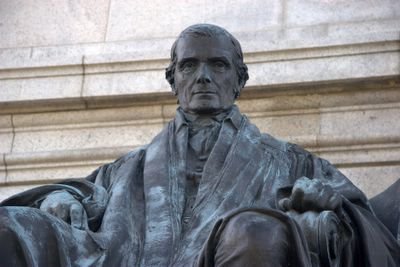
Justice John Marshall at the rear of the Cuyahoga County Court House. First Chief Justice of the Supreme Court.
Rufus P. Ranney seated at the rear of the Cuyahoga County Court House. An Ohio Supreme Court Justice in the 1850's.
They just don't make doors like this anymore. Native American face on Cuyahoga County Court House door. Anyone know anything about this? Who was he and what does he represent?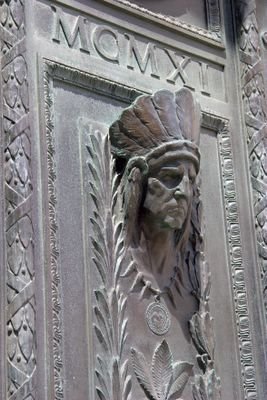
Side view of Native American face on Cuyahoga County Court House door.
Full frame of door with Native American face on Cuyahoga County Court House door.
Copyright 2006 James D. Fisher
All Rights Reserved
